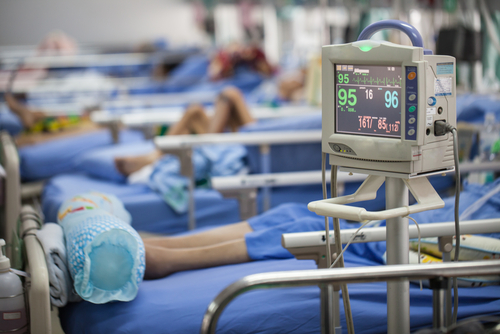Hemophilia Patients End Up at Emergency Rooms Most Often for Hypertension and Injuries

Adult hemophilia patients use hospital emergency departments mainly due to cardiovascular events, while pediatric patients most frequently complain of injuries, according to researchers. U.S. emergency department (ED) visits by hemophilia patients had a national estimated cost of $60 million in 2012, the year studied.
These observations resulted from the retrospective and nationwide study, “Emergency department utilization by haemophilia patients in United States,” published in the scientific journal Haemophilia.
The authors accessed ED use by hemophilia patients in the United States by analyzing information collected from the Nationwide Emergency Department Sample (NEDS) database, which gathers national estimates of hospital-based ED visits from 2006 to 2014. Researchers focused on the years 2006 to 2013.
They found that hemophilia patients represented 0.016 percent of the total number of ED visits nationwide. Most of these patients were children and young adults, and 15 percent of them were female. About half of the registered ED visits were in large central metropolitan areas and suburbs, and a quarter to a third of patients lived in low-income neighborhoods.
There were no major changes in the number of ED visits per year during the eight years analyzed in the study. According to the information from the database, the month of June had more ED visits by hemophilic patients, probably because in the summer people are more active and prone to injuries, according to the authors.
Because of the large amount of information collected from the database, the authors decided to perform a more detailed analysis of the data from 2012.
In that year, 4,488 ED visits by hemophilia patients were registered, representing 1.4 in every 10,000 ED visits. Of the total, 84 percent were patients with hemophilia A and 16 percent had hemophilia B. The median age of the patients was 25 years, and over one-third of the patients were children under age 18.
In most of the cases, hemophilia patients that resort to the ED were managed and discharged. However, 29 percent of them were admitted to a hospital.
The most frequent complaints of hemophilia patients in emergency departments were cardiovascular events (hypertension) followed by injuries and/or poisoning. Thirty-two percent of the patients had hemorrhage complaints, of whom 3 percent had intracranial bleeds. Transfusion-related chronic infections, septicemia, and central venous access device (CVAD)-associated complications were other common complains reported in ED visits.
A more detailed analysis of the pediatric patients showed that injuries were the most frequent complaints reported at the emergency department, followed by joint and soft tissue disorders, fever, and CVAD complications.
Older patients were found to present more serious clinical events. Thirty-five older hemophilia patients died after being admitted to the hospital. The reported cause of death was sepsis in 26 of the cases, and brain hemorrhage in four patients.
In 2012, the average charge per visit to a private ED was about $2,988, and $2,254 in a public hospital. This difference may be indicative of the levels of comfort with the disease and its associated complications. An ED physician from a private hospital may need more testing and investigations compared to those from a public hospital, the authors explained.
“In conclusion, patients with hemophilia have a tendency to utilize ED. Hypertension was the single most common presenting complaint in adults,” the authors wrote. “Mortality rate of brain hemorrhages was zero in children but much higher in adults.”
More studies are needed to clarify the cause of a possible association of the high frequency of cardiovascular events and occurrence of deadly brain hemorrhages in patients with hemophilia, the authors concluded.






